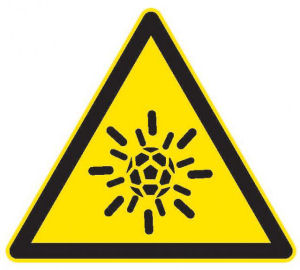There’s certainly something to be said for wild and crazy, “the universe is my canvas”, science fiction ideas–things with broad scope that seem tenuously plausible but highly disconnected from our day-to-day lives. Ever since 1982
When people mention nanotechnology to me, my mind tends to slide towards the first category. I’m thinking about Bloom and The Diamond Age, or even the Festival in Singularity Sky, things like that. I tend to not do the much harder job of thinking about the much more mundane, and much closer effects of nanotech.
And yes, they are much closer. This stuff is not pie in the sky, it’s happening right now.
Let me give you a couple of examples.
How about the one where nanotech makes one of my t-shirts obsolete.

Yes, science has brought us a new, darker, black. With nanotech. I love it.
A scientist at Rice University has created the darkest material known to man, a carpet of carbon nanotubes that reflects only 0.045 percent of all light shined upon it. That’s four times darker than the previously darkest known substance, and more than 100 times darker than the paint on a black Corvette.
If I don’t see a funky street name for this extra-black, and a fashion adaptation, before the end of 2008, I’ll eat my hat.
Or, how about battery life? Would you be impressed if nanotechnology made your iPod battery last ten times longer? Or if your phone kept working ten times longer? Or your laptop?
A tenfold improvement in battery life?
Stanford University researchers have made a discovery that could signal the arrival of laptop batteries that last more than a day on a single charge.
The researchers have found a way to use silicon nanowires to give rechargeable lithium ion batteries–used in laptops, iPods, video cameras, and mobile phones–as much as 10 times more charge. This potentially could give a conventional battery-powered laptop 40 hours of battery life, rather than 4 hours.
…
I’d be happy with three or four times the life of my iPod battery–just enough to last all the way to Melbourne without needing a recharge would be enough. But if my laptop could work all the way from Halifax to Melbourne without needing to be plugged in—I was going to say I could get a lot more work done, but in reality I’d probably have been playing video games half way around the world.
I’m also thrilled to read that the new anode style lends itself to quicker recharge as well. That could have its own unexpected knock-on results.
Now figure how this scales to the whole electric car story: charge time equivalent to the time it takes to fill your gas tank, range equivalent to what you get with a tank of gas. All of a sudden the lower maintenance, higher torque, quieter engine, etc, of the electric car become even more appealing. And, of course, since you can charge off-peak to take advantage of the cheaper energy and unused capacity of the grid, and because electricty is everywhere already…
When I think of technological results of nanotech, I don’t tend to think of it bolstering other macro-level technology, but here’s an example where a nanotech advancement makes a different marco-scale technology (electric cars) practical. And that’s before the “street has its own uses”.


